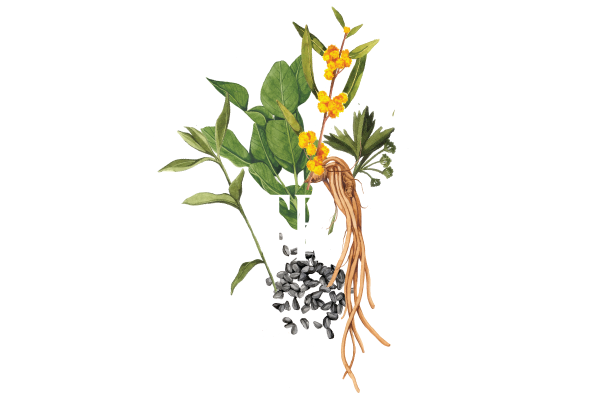
FLOWERS & FRUITS
Fruits and flowers add a perceived sweetness to vermouth even if no sugar has been added. There are many usable parts of a flower. Rose petals, for one, can be used in skincare products and cooking, whereas saffron – the vivid stigma of a Crocus sativus – is a highly-prized spice. A vermouth without flowers or fruit is like a dish without seasoning; it’s still edible, but won’t excite the palate.

Riberry
Syzygium luehmannii
Fruit (fresh) from Northern Rivers, New South Wales

Muntrie
Kunzea pomifera
Fruit (fresh) from Victoria
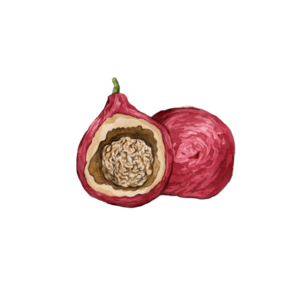
Quandong
Santalum acuminatum
Fruit (dried) from South Australia
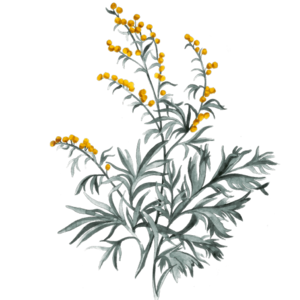
Wormwood
Artemisia absinthium
Flowers (fresh) from Central Victoria
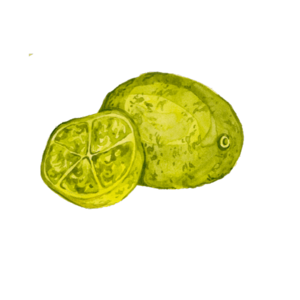
Desert lime
Eremocitrus glauca
Fruit (fresh) from Western Australia

Grapefruit
Citrus x paradisi
Zest (fresh) from Mildura
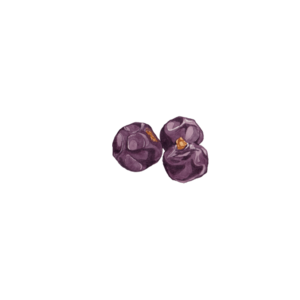
Juniper
Juniperus communis
Fruit (dried) from Croatia
LEAVES
Leaves are essential to most of the plant world. Leaves harness the power of the sun using photosynthesis to sustain the plant. Science aside, the leaves can be incredibly pungent and quite ‘green’ in flavour, adding an extra layer of freshness to a recipe.
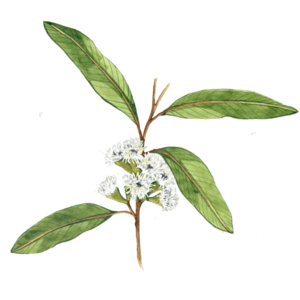
Lemon-scented gum
Corymbia citriodora
Leaves (fresh) from Central Victoria
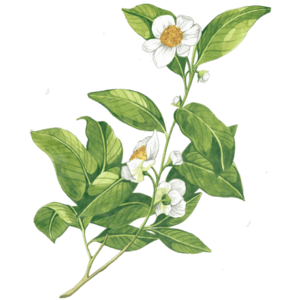
Shincha
Camellia sinensis
Leaves (steamed) from Victoria
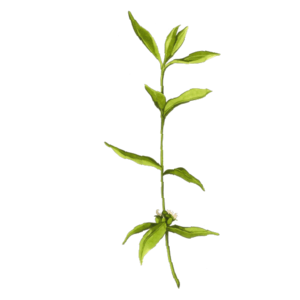
River mint
Mentha australis
Leaves & stem (dried) from Australia
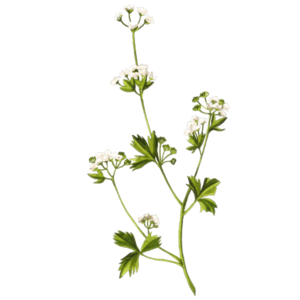
Sea parsley
Apium prostratum
Leaves & stem (dried) from Australia

Wormwood
Artemisia absinthium
Leaves (fresh) from Central Victoria
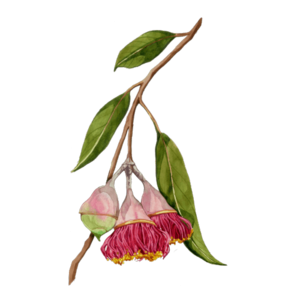
Strawberry gum
Eucalyptus olida
Leaves (dried) from Australia
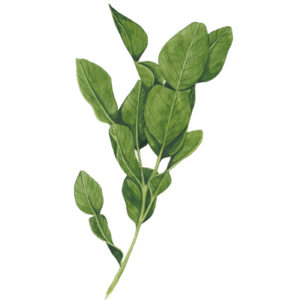
Kaffir lime leaf
Citrus hystrix
Leaves (fresh)
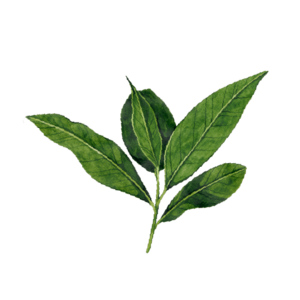
Bay laurel
Laurus nobilis
Leaves (fresh) from Central Victoria
ROOTS, BARKS & SEEDS
The primary reason we use roots in vermouth is to add extremely high levels of bitterness. Through years of evolution, our tastebuds have come to recognise bitterness as a potential toxin and are programmed to alert us to its presence. The upside of this fact is that when we do ingest something bitter, the brain identifies it as a poison and speeds up the metabolism to help the body digest it. This is why our favourite after-dinner drinks or aperitifs usually contain something bitter. To create a palatable vermouth, you are looking for a balance between the sweet and sour base ingredients and the bitterness of roots to round out the holy trinity.
Barks act similarly to roots in contributing bitter notes to vermouth. They are incredibly aromatic, too. Many barks also have antiseptic properties, which is to say; next time you cut yourself, skimp on the antiseptic cream and drink some vermouth instead.
Seeds are used in the production of vermouth for one very simple reason: spice. They bring a lovely warming characteristic that can be reminiscent of mulled wine and apple pie. Seeds are quite often dried to intensify their flavour so, generally speaking, a little goes a long way.
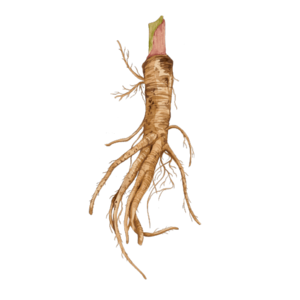
Angelica
Angelica archangelica
Roots (dried) from the Netherlands
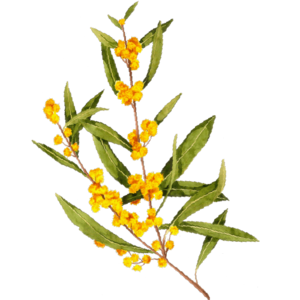
Wattle
Acacia Victoriae
Seeds (roasted) from South Australia
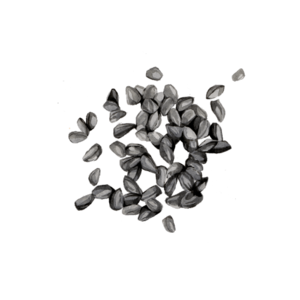
Nigella
Nigella sativa
Seeds (dried) from Egypt

Yellow gentian
Gentiana lutea
Roots (dried) from Bosnia and Herzegovina

Cinchona
Cinchona officinalis
Bark (dried) from Guatemala

Nutmeg
Myristica fragrans
Seeds (dried) Sri Lanka
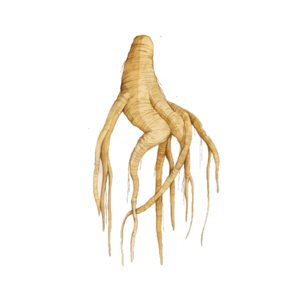
Japanese gentian
Gentiana scabra
Roots (dried) from China

ARTEMISIA ABSINTHIUM, OR GRAND WORMWOOD, IS USED IN VERMOUTH AS WELL AS ABSINTHE. IN FACT, UNDER EU LEGISLATION IT IS REQUIRED THAT A VERMOUTH USE AT LEAST A SPECIES OF THE ARTEMISIA GENUS IN ORDER TO BE CALLED A VERMOUTH.
Besides being mandatory under the law, there are other reasons why vermouth producers harness wormwood. One is the bitterness. For novice bartenders, the importance of balancing sweet, sour and bitter flavours in cocktails cannot be overstated, and it’s one of the first things they learn how to do.
The base of vermouth is wine, which contributes acid and sugar. A third, bitter element is needed to ensure harmony of flavour, and that is wormwood.
This botanical is perfect because, unlike a lot of other bitter plants, it has an amazing aromatic profile. Think soft anise, mint and sage all rolled into one, lifted with the smell of fresh orange flowers. Wormwood not only balances out everything else in vermouth, it provides the backbone for those flavours to sit on.
WANT TO KNOW
MORE?
THE ABOVE IS JUST A SAMPLE OF THE BOTANICALS
SHAUN AND GILLES HARNESS IN THEIR TINCTURES.
GET IN TOUCH TO LEARN MORE